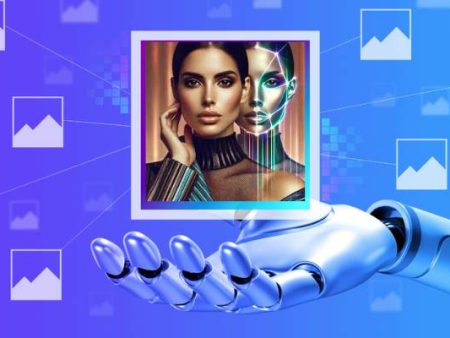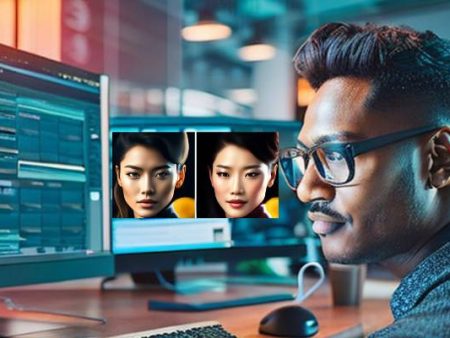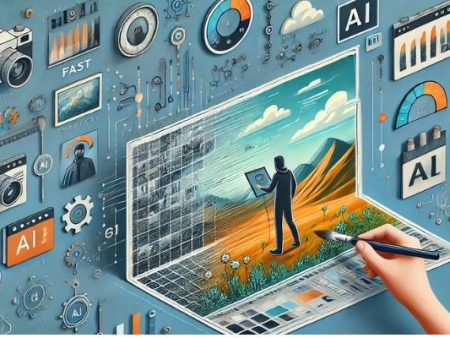When photography was first invented, painters panicked. Would their craft become obsolete?
Would the camera, with its ability to capture reality so perfectly, replace the centuries-old art of brush and canvas?
History gave us the answer: no, it didn’t. Photography didn’t kill painting—it pushed it into new directions.
The same question is now haunting us again, only this time it’s not about cameras. It’s about AI image generation.
Specifically, text-to-image tools. Tools like MidJourney, Stable Diffusion, and DALL·E are transforming not just how images are made, but how we think about making them.
And increasingly, prompting—yes, simply typing instructions into a box—is being talked about as a form of artistry in itself. Some even say it’s becoming the new photography.
But is that really true? And if so, what does it mean for artists, designers, and everyday people? That’s the journey we’re taking here.
The Mechanics: How Prompting Actually Works
Before diving into the cultural side, it’s worth asking: how do these tools actually work?
When you feed a prompt like “a photo of a jazz band playing underwater in the style of 1950s film noir,” the AI doesn’t “look up” a picture that already exists.
Instead, it generates one on the fly, pulling from its training data—billions of images—to recognize patterns and rebuild something new.
It’s a bit like training a photographer who has studied every style, every lens choice, every lighting scenario.
The difference? This photographer is tireless, infinitely scalable, and can interpret your wildest imagination without leaving their desk.
This is why many people argue that prompting is the future of why AI image generators matter. Because it’s not just about manipulating pixels—it’s about speaking visual language through text.
The Shift: Prompting as an Art Form
Here’s where things get interesting. Photography once required technical mastery: exposure, aperture, lenses. Today, prompting requires its own kind of mastery.
A simple phrase may get you a messy, incoherent image. But a carefully crafted, nuanced prompt can yield something breathtaking. Prompt engineering, as it’s called, is becoming a creative skill. Communities online trade prompt recipes the way photographers once traded film techniques.
In a way, prompting is less about pressing a shutter button and more about directing a creative partner. You give the AI vision, tone, and constraints, and it brings them to life.
This is why many argue prompting is not cheating—it’s art by collaboration.
AI Insights on AI-Generated Portraits More Real
One fascinating outcome of this shift is portraiture. AI-generated portraits have reached a level of realism that sometimes fools the eye. And here’s where AI insights on AI-generated portraits more real come into play.
In 2022, researchers at the University of Chicago found that participants often rated AI-generated faces as more trustworthy and real-looking than actual photographs of people. That’s staggering.
But this raises unsettling questions. If AI portraits can appear more real than real, what does that mean for authenticity? For journalism? For memory itself?
A photo of your grandmother is irreplaceable precisely because it’s real, a slice of time. But when AI creates a portrait of someone who never existed, and people find it even more convincing, are we crossing into a world where authenticity loses its value?
AI Insights on AI Tools Are Redefining the Creative Process
It’s not just portraits. Across the board, AI insights on AI tools are redefining creativity.
Think of fashion: entire outfits are being designed virtually before a single fabric is cut. Architects are using AI to render speculative cityscapes in minutes.
Graphic designers use AI to brainstorm concepts and mood boards, accelerating what once took days.
The impact of models to AI-designed outfits is particularly revealing. Fashion houses are experimenting with AI-generated models wearing AI-created outfits.
This not only saves costs but also opens up entirely new aesthetics—garments that might defy physical construction but inspire real-world design.
But it’s not all glossy innovation. There are concerns here too. What happens to the thousands of human models who once made a living posing for shoots?
Or to the craft of tailoring when virtual outfits flood social media feeds, unattainable and impossible in fabric?
Emotional Resonance: Can Prompting Carry Feeling?
This is where the debate gets deeply human. Prompting, at first glance, looks mechanical. Type a command, wait a few seconds, get an image.
But when you really watch people using it—especially artists—you see emotion in the process.
They agonize over word choices, tweak descriptors, add emotional cues like “melancholy” or “joyful,” and refine until the image feels right. Isn’t that just another form of expression?
Some critics argue prompting lacks intimacy, that it’s too detached from the final outcome. But I disagree. It’s different, yes.
But so was photography compared to painting. The emotional labor is still there—it’s just hidden in words instead of brush strokes.
A Historical Parallel: Photography and Its Critics
We’ve seen this before. When photography arrived in the 19th century, painters feared extinction.
Critics called photography mechanical and soulless. And yet, it flourished—not as a replacement, but as a parallel art.
The same trajectory seems likely for AI. Prompting won’t erase traditional art forms, but it will carve out its own identity.
One day, we may look back and wonder why we questioned whether prompting was art at all.
The Market Realities: Growth of AI Images
Let’s look at numbers for perspective.
- The global AI image generation market is projected to grow from $16.1 billion in 2023 to $63 billion by 2028 (MarketsandMarkets).
- By contrast, traditional stock photography is projected to grow at a slower rate, reaching $4.5 billion by 2027 (Grand View Research).
- A Statista report shows that by 2023, nearly 27% of U.S. adults had already experimented with text-to-image tools.
Those numbers are staggering. And they hint at a future where text-to-image tools aren’t niche—they’re mainstream.
Ethical Challenges
Of course, we can’t gloss over the concerns.
- Copyright Issues: Many AI models are trained on existing art, raising questions of theft and consent.
- Bias: AI often reflects biases in its training data, leading to skewed or stereotypical outputs.
- Job Security: Artists, designers, photographers, and even models face disruption.
- Misinformation: AI-generated visuals can easily spread as “real” photos, undermining trust.
These aren’t trivial problems. They demand regulation, community standards, and above all, open dialogue between technologists and creatives.
The Future of Why AI Image Generators Matter
So, where is this all heading? The future of why AI image generators matters isn’t just about making pretty pictures faster. It’s about rethinking how we tell stories visually.
Prompting democratizes creativity. A child, a retiree, or someone who’s never picked up a paintbrush can now create stunning art with nothing more than words. That access is revolutionary.
But it also forces us to wrestle with what creativity means. Is it the making? The imagining? The labor? Or the connection between artist and audience?
For me, the answer is all of the above. And that’s why AI doesn’t erase human art—it challenges us to redefine it.
Conclusion: Prompting as the New Photography
So, is prompting really the new photography? In many ways, yes. Both rely on tools that expand human imagination.
Both were criticized at first for being too mechanical. And both democratize expression for broader audiences.
But prompting isn’t just photography 2.0—it’s something new entirely. It allows us to imagine worlds untethered from reality, to test ideas faster than ever, and to expand the canvas of human creativity.
Does that make it less human? No. If anything, it reflects something deeply human: our endless desire to create, no matter the medium.
And so, maybe the real story isn’t about whether AI will replace photography. It’s about whether we, as humans, can embrace prompting as one more way to see the world—and to see ourselves—through a new kind of lens.


